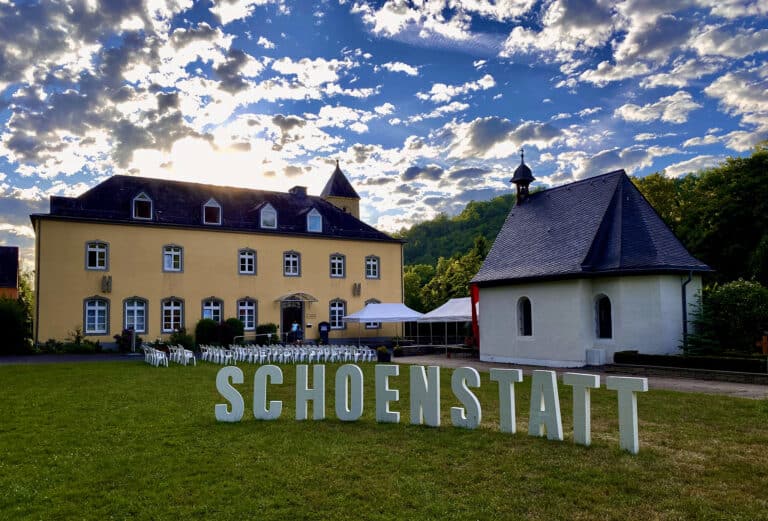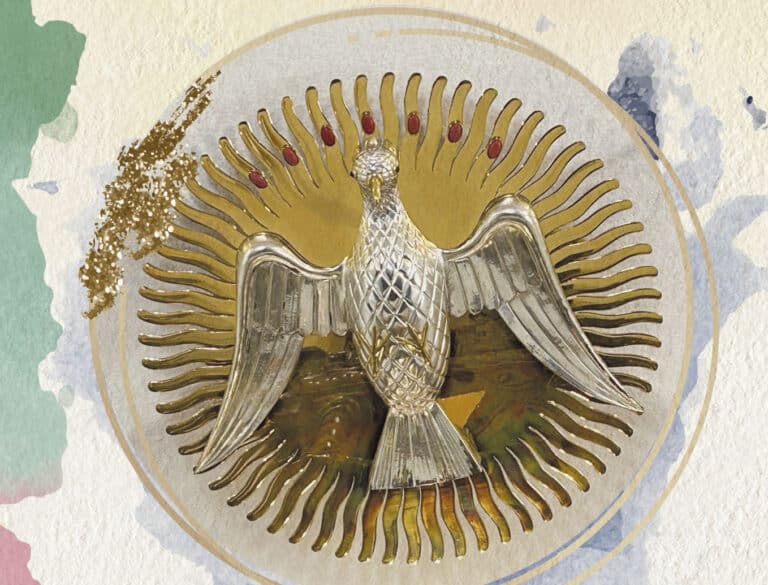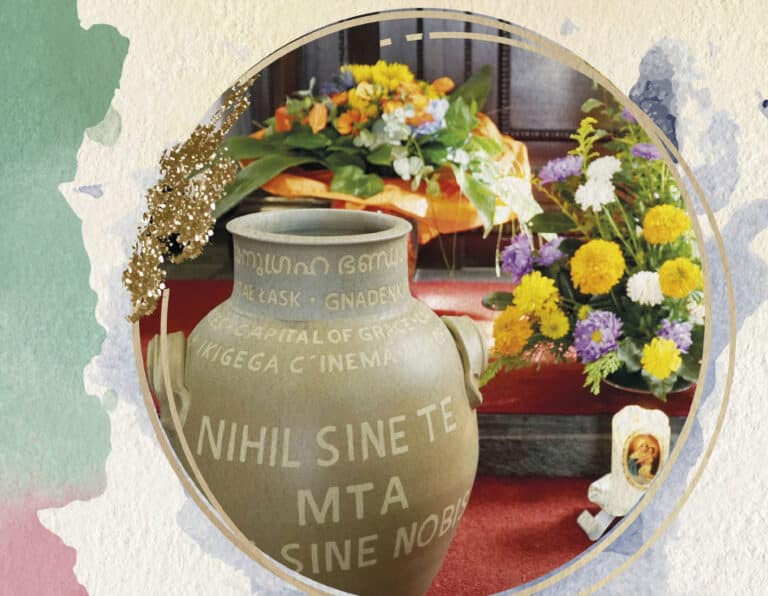“Perhaps we need to feel an emptiness to realize that we cannot do everything ourselves,” said Bishop Leo Wagener, Auxiliary of the Archdiocese of Luxemburg, at the end of the Covenant of Love celebration of the International Schoenstatt Movement in the Original Shrine in Vallendar. With these words he referred to the amazing history of Schoenstatt in Luxembourg, which began in the 1930’s. For decades it remained stagnant there, and with the Pilgrim Mother Apostolate it has gained significant momentum in the last few years.
In more than 140 pilgrim circles, Jesus and his mother Mary visit their children every month through the image of the Mother Thrice Admirable of Schoenstatt in the small country of Luxembourg. On the Schoenstatt Day celebration, in which the international Schoenstatt Movement commemorates each year its founding day on October 18th, Luxembourg participated along with Germany, gathered in person around the Original Shrine.
The isolated Christian will become like a bird for the “cat of secularization”
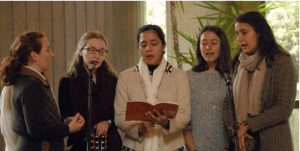
Schoenstatt Day 2022 began in the morning with an internationally organized Holy Mass in the Pilgrims’ Church, in which Sister M. Tabea Platzer and the candidates of the Schoenstatt Sisters of Mary made a special contribution with songs and texts in French. Father Lothar Herter, director of Schoenstatt’s pilgrimages, greeted the 250 pilgrims present, making special mention of Luxemburg, the most numerous pilgrimage community that day.
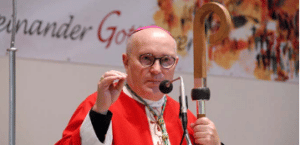
Bishop Leo Wagener, Auxiliary Bishop of the Archdiocese of Luxembourg, presided at the Eucharistic celebration. In his homily he picked up on the annual motto of the Schoenstatt Movement in Germany: “Listening to God together“. It is not only about listening to God as individuals, but as a community. It is a fact that being a Christian in the future will only be possible by living in community. “The isolated Christian will become like a bird for the ‘cat of secularization’,” stated Wagener. However, listening to God together with others is more demanding, “because it only works if each individual is a God-listener himself first.” The less one listens to the individual, the more difficult it is to listen to God altogether.
Mary, an example of listening to God
Listening to God together is also the focus of the worldwide synodal process initiated by Pope Francis and recently extended until October 2024. Wegener commented that he was not yet clear where this process would lead. However, one thing is certain: “The process will end in a debacle if we think that the direction should be given by those who scream the loudest. The way of the Church can only be revealed by listening to God together.” Otherwise, the way of the Church becomes “a battlefield of opposing positions”.
To learn to listen to God, it is worthwhile to observe Mary. “Mary speaks little and listens a lot,” Bishop Leo said. Mary is a listener “because she turns away from herself.” She is not attached to herself, but to the Lord. “She gets rid of all self-centeredness and says with complete freedom: let it be done unto me as you have said.” In this way, she is a teacher of “listening to God in community” and responding to God’s will
Schönstatt in Luxembourg – Mary goes far and wide
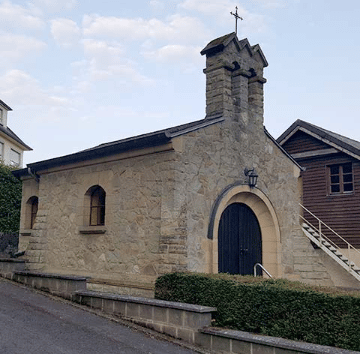
The rest of the Schoenstatt Day included an alternative program in the afternoon. There was a choice between a talk on the Covenant of Love, a meditation in the Original Shrine, the possibility to receive an individual blessing, a meditated rosary, the sacrament of Reconciliation, and a “Schoenstatt mile” with various projects on the plaza near the Pilgrims’ House.
The focal point of the Covenant Hour was the encounter with Schoenstatt Luxemburg. Professor of religion, Aloys Dühr, came into contact with Schoenstatt’s founder, Father Joseph Kentenich, in the 1930s, and learned about Schoenstatt’s spirituality and pedagogy. His personal experiences at the Shrine of Our Lady of Schoenstatt prompted him to build a Marian chapel in his hometown of Diekirch, Luxembourg, which was consecrated in 1938, shortly before the outbreak of World War II.
During the war the chapel became a refuge for numerous mothers who suffered greatly and had to give up or even lose their children. After the war, a maid of Aloys Dühr and later another woman took care of the chapel. Schoenstatt did not continue to evolve there for a long time, but from the year 2000 onwards the Sisters of St. Elizabeth took over the responsibility for the chapel. Also in 2000, the first connections to the Schoenstatt Rosary Apostolate in Luxembourg emerged, and “some years later, starting in November 2011, the Mother Thrice Admirable of Schoenstatt once again found her way to Luxembourg,” expressed Sister M. Isabel Machado in a videotaped testimony. Some 1,000 homes are currently connected through the regular visit of the Schoenstatt Pilgrim Mother. Gratitude was expressed for this development on the processional way to the Original Shrine.
Creating an oasis, we can all do it
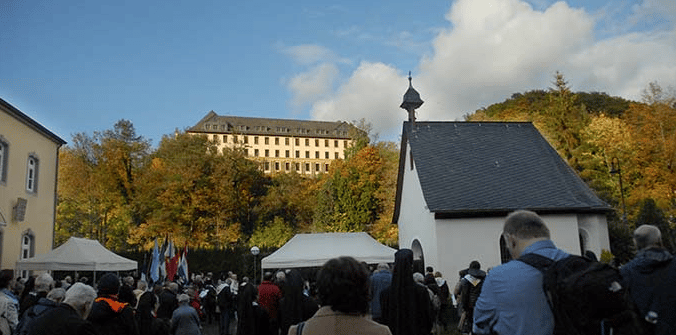
During the celebration of the renewal of the Covenant of Love, the stressful world situation with the war and climate crisis, the effects of pandemics, loneliness, fears and insecurities were then taken up in prayer and given to Mary in the Shrine. Father Kentenich’s word of hope at the end of the celebration became an encouragement for many: “Away with this pessimism…. How it tires us!
Therefore, get rid of this narrow-mindedness! It is out of place in the face of the needs of the times and the changing trend. We must create an oasis, and we can all do it.”

